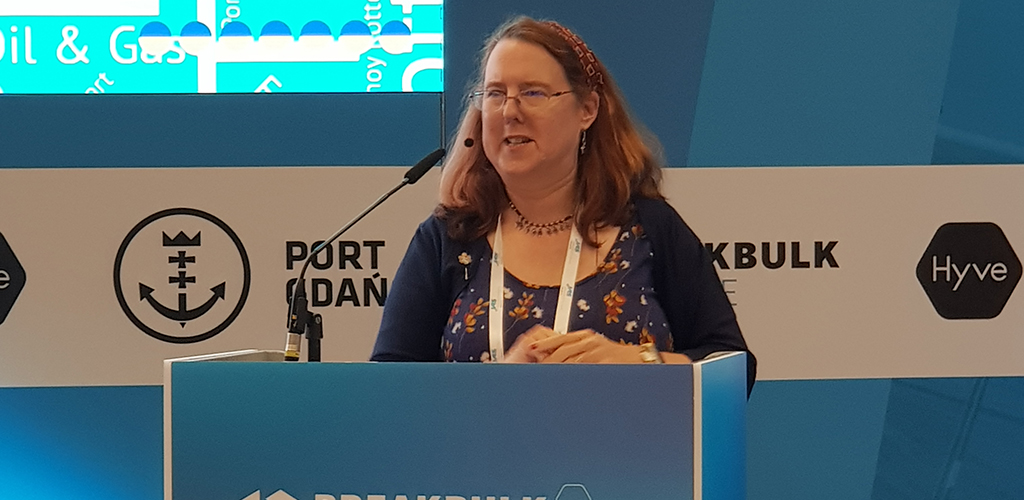May 18 | 2022
Drewry’s Oatway Says Disruptions Continue to Cloud Outlook

By Mike King
SAME-DAY BREAKBULK EUROPE COVERAGE: War in Europe, Covid-19 lockdowns and ongoing supply chain disruptions will continue to cloud the outlook for the multipurpose vessel, or MPV, sector in 2022, according to Susan Oatway, senior analyst, multipurpose and breakbulk shipping for Drewry Shipping Consultants.
Speaking at Breakbulk Europe 2022, she said Ukraine had “usurped” Covid at the top of the list of issues creating market uncertainty in the short to medium term.
“Russia’s invasion of Ukraine might not have a clear impact on MPV trades, except perhaps in the short-sea Northern European market, but the impact on global confidence, rising commodity prices and the competing sectors has definitely caused the rate rises of the past 12-18 months to falter,” she said.
Drewry’s Multipurpose Time Charter Index, which tracks one-year period charter rates across a basket of vessels including breakbulk and project cargo ships was steady in April, halting the declines suffered in March.
This meant that in the year to April 2022 the Drewry index was up 40 percent, and had surged 88 percent since April 2020.
However, Drewry expects the index to soften throughout the year. “We had expected a slight softening [in April], but rates were held up by China’s Covid lockdowns and extended Easter holidays in Europe,” Oatway said.
“Going forward, we expect the weakening trend to return in May with the Index dropping, albeit by less than 0.5 percent to $11,120 per day.”
Aside from the gloomier outlook for the global economy, another negative for MPV operators is the anticipated reduction of container supply chain disruption later this year and in 2023.
“Much of the recovery we have seen over 2021 is more to do with the supply chain crunch in the competing sectors than it is with any significant volume increases,” Oatway said.
“The MPV sector has benefitted from the desperate search for space which has resulted in cargoes that were previously containerized moving back onto breakbulk vessels. This effect is expected to weaken over the second half of 2022 and into 2023.”
Oatway also said the age of the MPV fleet was “concerning” and new IMO EXII [Energy Efficiency eXisting ship Index] regulations might impact vessel supply due to rising demolitions and slow steaming.
“Newbuildings are thin on the ground and yet there is a demand for a more eco-conscious fleet – but where is the funding for the next generation of multipurpose ships?” she asked.
For its part, the heavy-lift-capable fleet is growing, albeit very slowly. Oatway said: “Unlike the container sector, MPV operators rarely invest without purpose these days. So will renewable energy be the catalyst for that new investment?”
The upshot of so much uncertainty, according to Oatway, is a future in which defining ‘normal’ might be difficult. For MPV operators, much will depend on the strategies of shippers.
“I am often asked when will the market return to normal?” she said. “But I think the question should be what will ‘normal’ look like when the current issues have unwound?
“The strategy of shippers will be paramount – breakbulk moving back to containers? Project cargo in project carriers or ro-ro? How will these strategies change as container rates fall?
“All of these will have an impact on that ‘normal’,” she said.
Check out our interview with Susan Oatway at Breakbulk Europe:

